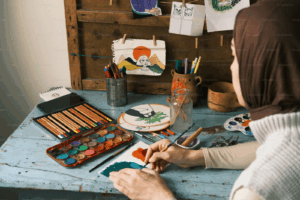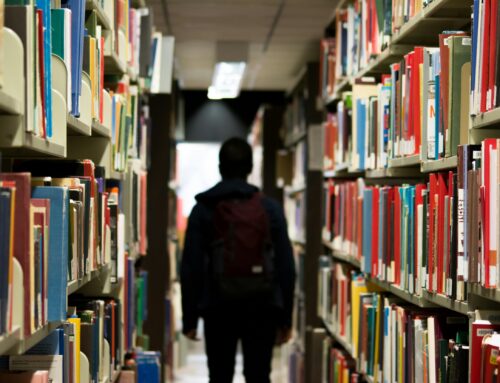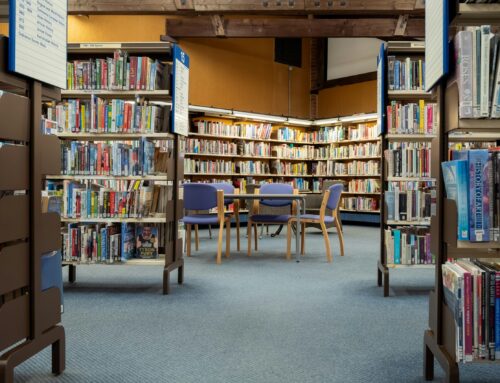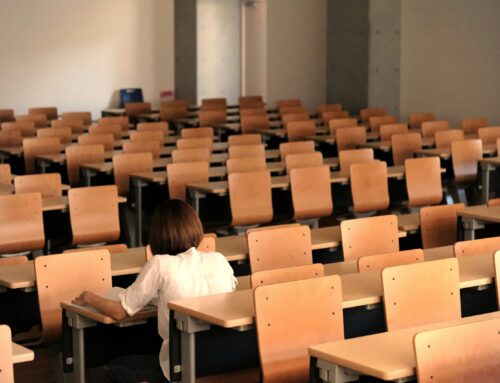 What Does It Mean to Integrate Arts Education? Does It Benefit Students?
What Does It Mean to Integrate Arts Education? Does It Benefit Students?
Arts education refers to the activities outside of a student’s regular curriculum, including visual arts, music, instrumental music, theatre, etc. Specifically, studies are showing the positive outcomes in arts integration and intentionally aligning learning in arts within all other subjects.[1] In support of this integration, fine arts programs are stressing the importance of various factors in order for this integration to flourish. Some of these elements include fostering partnerships with non-profit organizations, aiding in the professional development of teachers, and containing a community of art-driven educators alike.[1]
With the incorporation of the arts in curriculums, various elements aid in supporting a student’s success. They contain the ability to serve as a powerful discipline, providing students the necessary engagement, responsiveness, and connectivity skills in approaching various environments.[2] This conveys how these teachings apply both inside and outside the classroom, as well. Arts education can also improve writing quality and early reading skills, where students are able to form complex ideas and nurture quality writing and storytelling.[2] With these gained skills in mind, students are then able to apply their learning to tests, where an overall improvement of test scores was seen within students that participated in an arts-rich curriculum.[2] In particular, studies reported greater proficiency in subjects like math, social studies, and science.[2] In examining these aspects, there are observable positives to arts education and the engaging experience its teachings have on students. Next, it’s important to discuss various real-world applications of these principles within typical curriculum subjects.
Specific Instances of Arts Education Integration
In one study pertaining to the topic, researchers closely observed the “mind habits” of students to identify positive correlations between this and arts education. Within the study, the two mind habits of “Reflect” and “Observe” were utilized in an experimental group teaching science and art lessons simultaneously.[3] In combining these elements with typical class structures such as demonstrative lectures and critiques, the educators observed a more interactive and reflective environment, instilling improved critical thinking and self-assessment abilities.[3] Altogether, these findings correlate to a larger understanding of the arts education application within curriculums and how such enhances a student’s experiences. Another study, in a similar application of arts education, utilized within-child modeling techniques to determine varying associations with achievement in reading and mathematics particularly.[4] The resulting data found positive associations, the central effects having moderate expanse within students over a short period of time.[4] This study explicates another successful application of arts education within student’s regular curriculums.
Alongside the more academic advantages of arts education integration, other studies have depicted the gained emotional empathy and how this positively influenced other aspects of students’ success. Taking place in Houston, Texas, a randomized, controlled trial of 42 elementary and middle schools revealed how “…randomly assigning arts educational opportunities reduces disciplinary infractions, improves writing achievement, and increases students’ emotional empathy.”[5] In this, a correlation between increased arts education and a reduced number of students receiving disciplinary infractions was also examined, further solidifying the program’s positives.[5] The researchers found that because the study had been the first large-scale control trial of arts learning, these discoveries significantly added evidence in validating the arts education’s impact on students, their academic outcomes, and social-emotional development.[5]
Specifically, one can observe the positive effects presented within each individual subject taught within arts education, one of which includes music. One study concluded from their findings that, in considering background variables and how such had the potential to affect data on these positive outcomes, the relationship between music and academic achievement remained consistently strong.[6] In this study of multilevel mixed modeling of intellectual and social development, the arts and music convey another aspect of their positive influence and the consistency of their effects, as students of contrasting backgrounds and previous scholarly success showcase academic achievement as a result.
Alongside these more general positive effects, studies have also examined arts education’s effect on students celebrating/embracing their specific cultural identities. A study observing this closely focused on the identity development of African American male students as a result of school-based performing arts. Before enacting the study, researchers predicted that students’ involvement within such would “engender positive school experiences and encourage affirmative racial identity development,”[7] and found later on that these aspects, along with overall academic achievement, had indeed occurred. As a result, researchers discovered three central themes from their data analysis: positive school climates, positive impact of performing arts on academic achievement, and the connection between positive racial identity and art-based performance of African American male students.[7] With these elements, the students participated in African American themed performance projects, which aimed to support the development and positive understanding of their racial identity, thus providing a platform in which they could embrace their culture as well.
In continuation of the topic of performing arts, another study depicts elementary schools performing in a student-based Shakespeare festival in Houston, TX. The festival was even promoted within the media, as the author of the scripts created blogs, and the Fine Arts Department worked with media teams to make a press release.[1] As a result, researchers found an overall decrease in disciplinary action rates, showing evidence that there were “[benefits] in treatment group participation over the comparison group as evidenced by a lower mean in-school suspension rate of .16 points and a lower mean out-of-school suspension rate .08.”[1] In addition, mathematical score and reading improvements were observed, depicting both the academic and behavioral positive effects that arts education integration has on students, especially when their participation within such is placed highly and considered an integral aspect of academic success.
Conclusion
Observably, countless studies have been conducted that demonstrate real-world applications and results from a more prominent emphasis on arts education in students’ curricula. Going forward, as technology and other advancements continue to provide new opportunities for students, the chance of better preservation and restoration of arts education within schools has increased.[5] As the push for the continuation and increased engagement of arts education persists, it’s important to refer back to studies such as the ones demonstrated here, since they provide strong evidence of the power that arts education has on enhancing students’ learning.
How Does PSG Fit In?
At Publishing Solutions Group, we understand the transformative power of arts education, especially in its ability to enrich students’ academic experiences as well as personal growth. The studies above have indicated how arts education can enhance one’s creativity, critical thinking and problem-solving skills. These elements all contribute towards academic success, and in recognizing this, we are committed to delivering high-quality, meticulously crafted content tailored to support programs including arts education. We aim to provide educators the resources needed to inspire creativity and foster engaging learning environments that students can thrive within.
[1] https://eric.ed.gov/?id=ED598749
[2] https://eric.ed.gov/?id=ED596318
[3] https://www.tandfonline.com/doi/pdf/10.1080/00220671.2024.2397407
[4] https://doi.org/10.1080/10632913.2018.1423595
[5] https://doi.org/10.1002/pam.22449
[6] https://doi.org/10.1177/0022429420941432
[7] https://eric.ed.gov/?id=EJ1205551
Image free to use under the Unsplash license.




